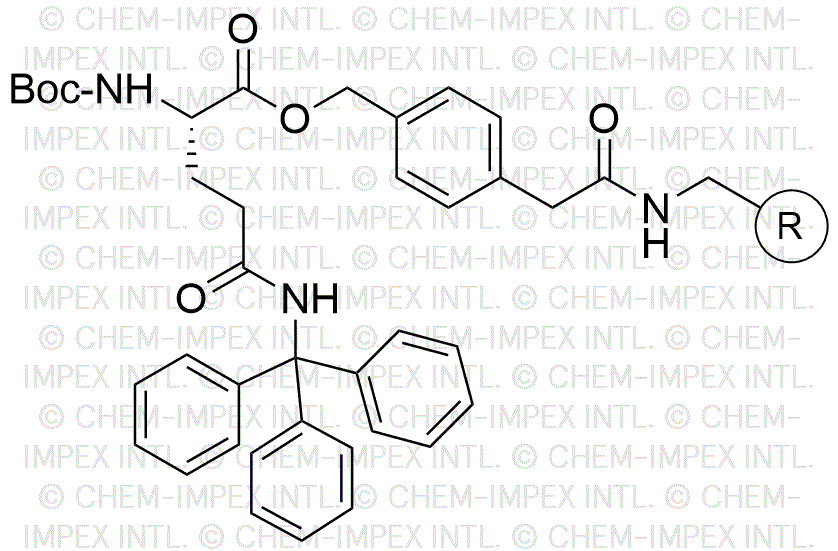Na-Boc- Nd-trityl-L-glutamine 4-oxymethylphenylacetamidomethyl resin is widely utilized in research focused on:
- Peptide Synthesis: This compound serves as a key building block in the synthesis of peptides, allowing researchers to create complex structures for various biological studies.
- Drug Development: It plays a crucial role in the pharmaceutical industry for developing new drugs, particularly in creating targeted therapies that require precise molecular configurations.
- Bioconjugation: The resin is used in bioconjugation processes, enabling the attachment of biomolecules to surfaces, which is essential for creating biosensors and diagnostic tools.
- Material Science: In material science, it aids in the development of novel materials with specific properties, enhancing the performance of coatings and composites.
- Research in Biochemistry: This compound is valuable in biochemistry research for studying protein interactions and enzyme activities, contributing to advancements in understanding cellular processes.
General Information
Properties
Safety and Regulations
Applications
Na-Boc- Nd-trityl-L-glutamine 4-oxymethylphenylacetamidomethyl resin is widely utilized in research focused on:
- Peptide Synthesis: This compound serves as a key building block in the synthesis of peptides, allowing researchers to create complex structures for various biological studies.
- Drug Development: It plays a crucial role in the pharmaceutical industry for developing new drugs, particularly in creating targeted therapies that require precise molecular configurations.
- Bioconjugation: The resin is used in bioconjugation processes, enabling the attachment of biomolecules to surfaces, which is essential for creating biosensors and diagnostic tools.
- Material Science: In material science, it aids in the development of novel materials with specific properties, enhancing the performance of coatings and composites.
- Research in Biochemistry: This compound is valuable in biochemistry research for studying protein interactions and enzyme activities, contributing to advancements in understanding cellular processes.
Documents
Safety Data Sheets (SDS)
The SDS provides comprehensive safety information on handling, storage, and disposal of the product.
Product Specification (PS)
The PS provides a comprehensive breakdown of the product’s properties, including chemical composition, physical state, purity, and storage requirements. It also details acceptable quality ranges and the product's intended applications.
Certificates of Analysis (COA)
Search for Certificates of Analysis (COA) by entering the products Lot Number. Lot and Batch Numbers can be found on a product’s label following the words ‘Lot’ or ‘Batch’.
Número de catálogo
Número de lote/lote
Certificates Of Origin (COO)
This COO confirms the country where the product was manufactured, and also details the materials and components used in it and whether it is derived from natural, synthetic, or other specific sources. This certificate may be required for customs, trade, and regulatory compliance.
Número de catálogo
Número de lote/lote
Safety Data Sheets (SDS)
The SDS provides comprehensive safety information on handling, storage, and disposal of the product.
DownloadProduct Specification (PS)
The PS provides a comprehensive breakdown of the product’s properties, including chemical composition, physical state, purity, and storage requirements. It also details acceptable quality ranges and the product's intended applications.
DownloadCertificates of Analysis (COA)
Search for Certificates of Analysis (COA) by entering the products Lot Number. Lot and Batch Numbers can be found on a product’s label following the words ‘Lot’ or ‘Batch’.
Número de catálogo
Número de lote/lote
Certificates Of Origin (COO)
This COO confirms the country where the product was manufactured, and also details the materials and components used in it and whether it is derived from natural, synthetic, or other specific sources. This certificate may be required for customs, trade, and regulatory compliance.


